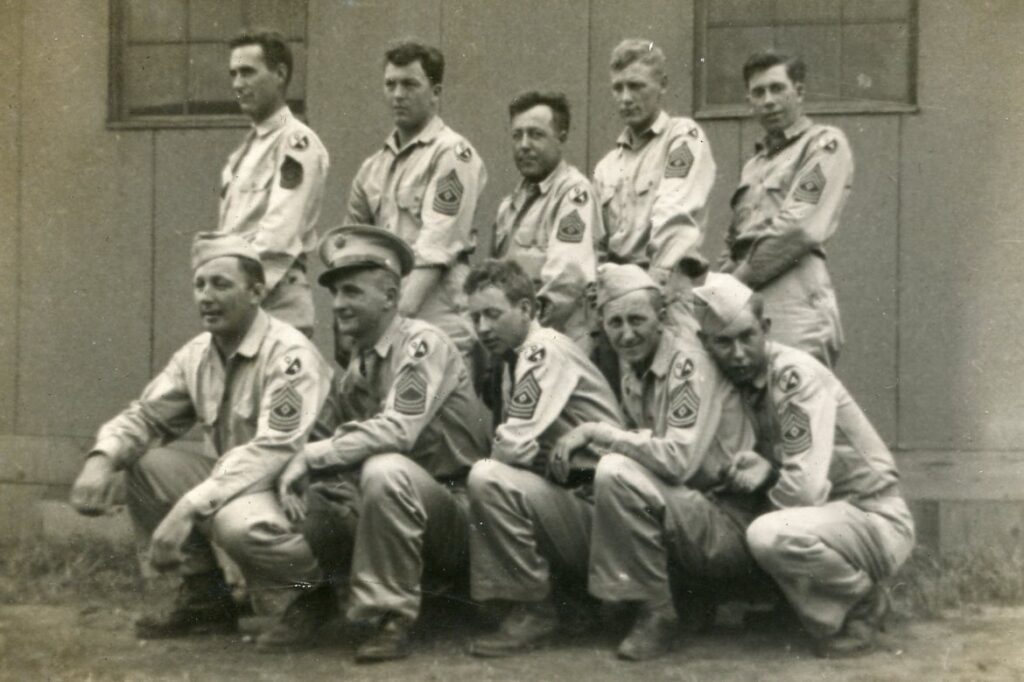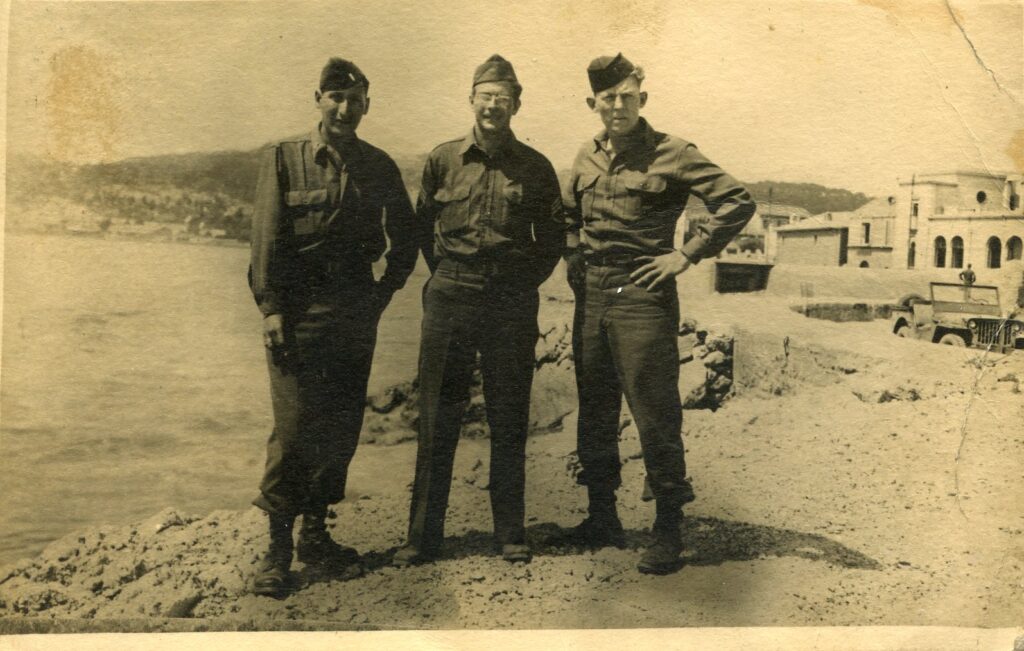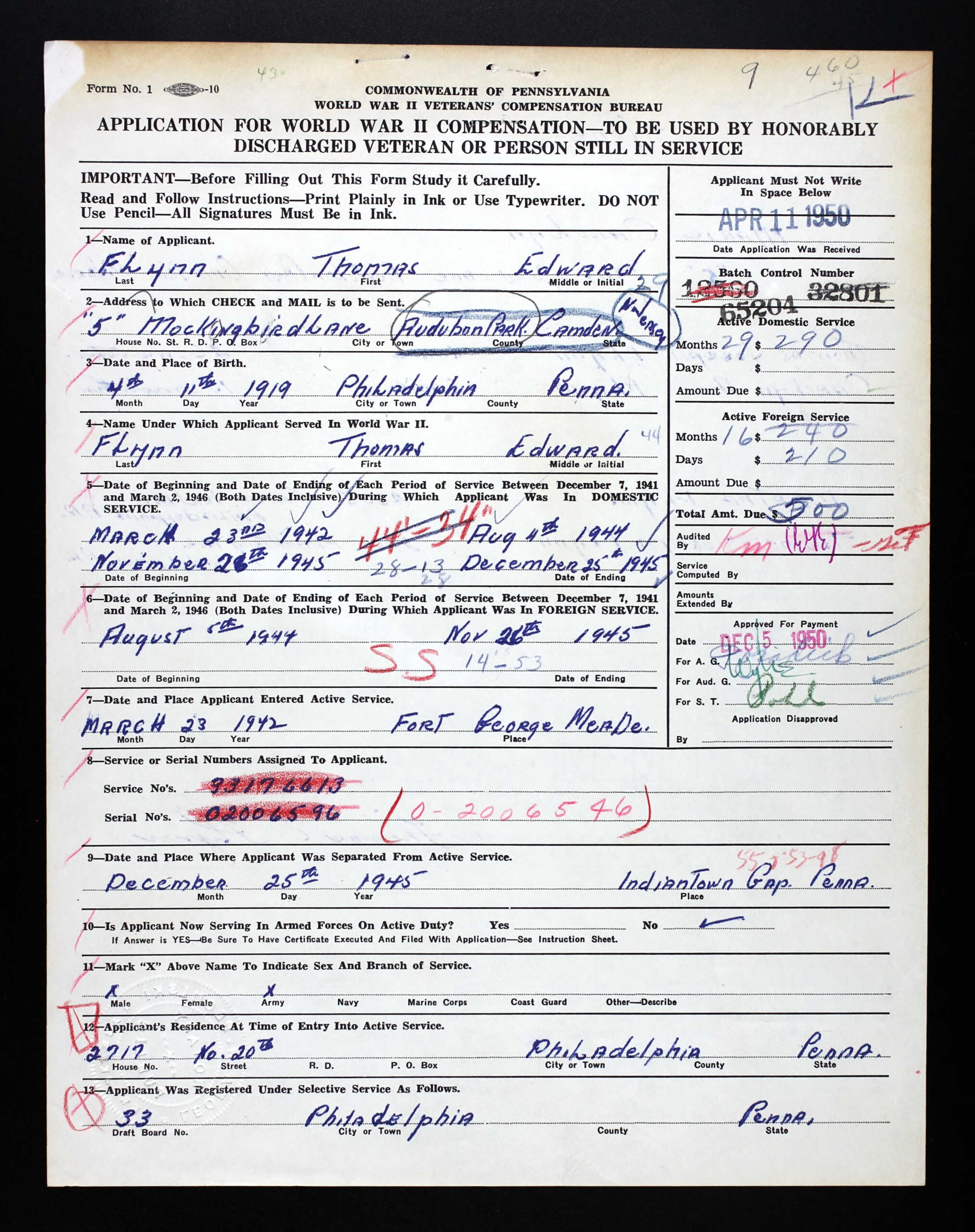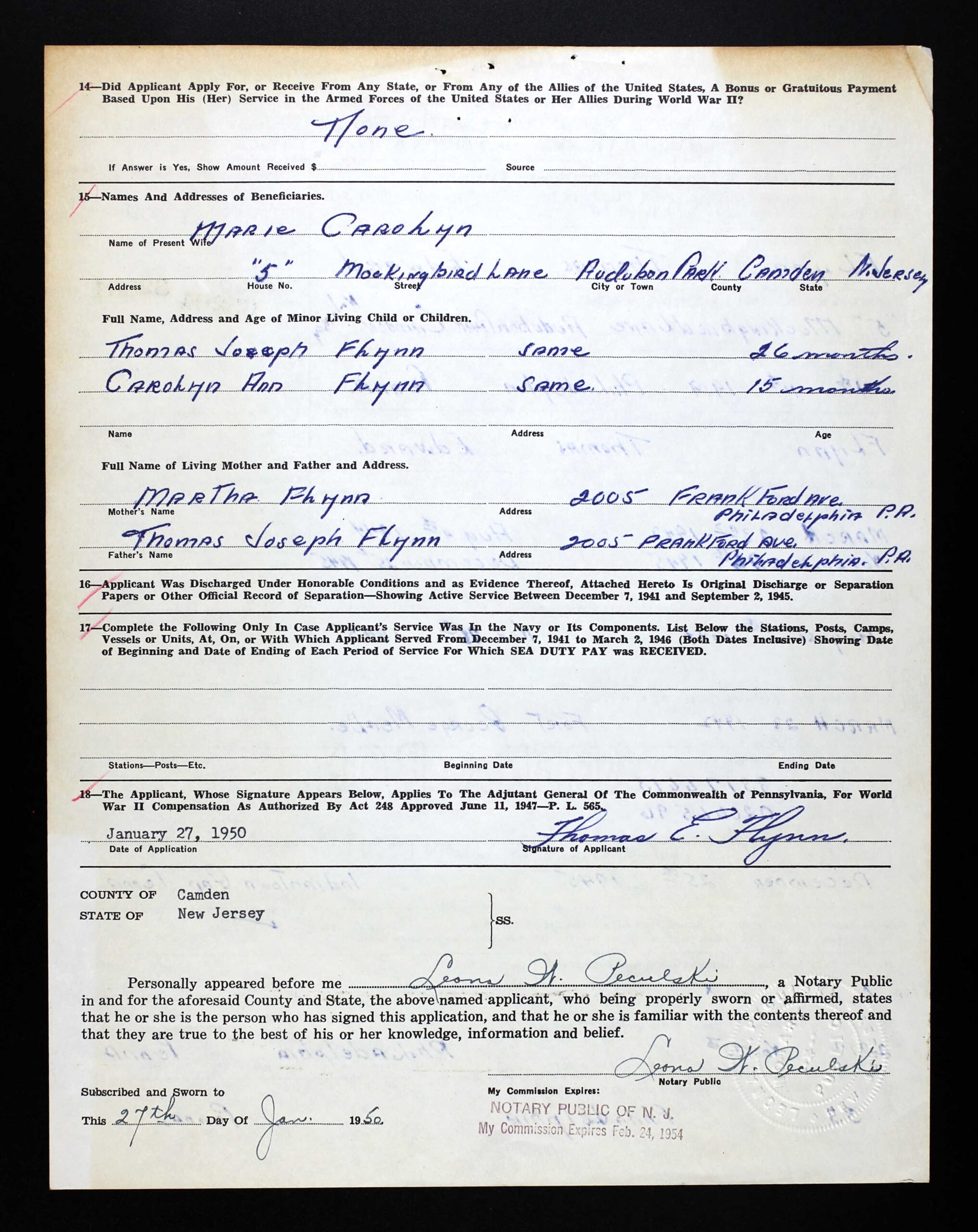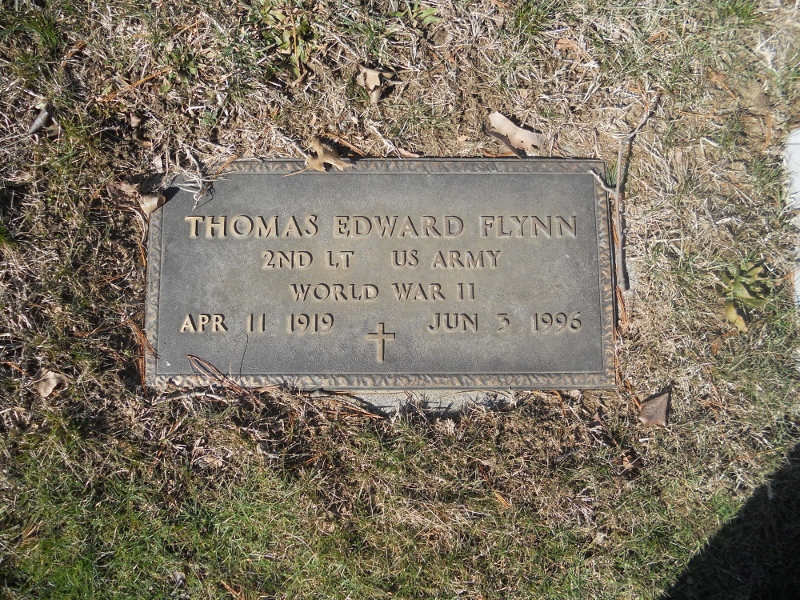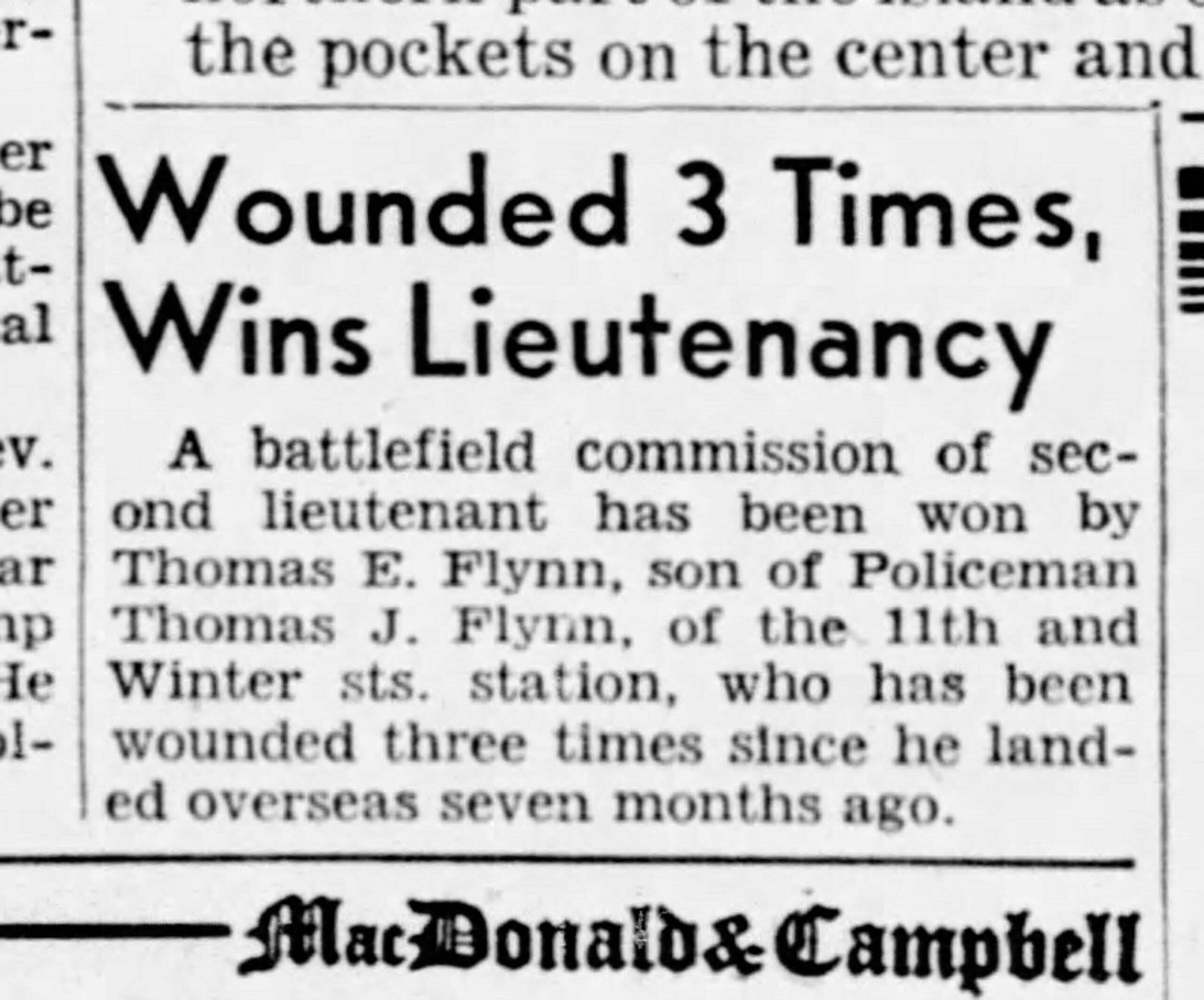Thomas Flynn WWII Dog Tag in the UK
 Patriot Connections Dog Tag Project was contacted by Chess Fearnley, whose mother, Fiona David, found a WWII dog tag while medal detecting in England. They were looking for some help in locating/reuniting the veterans / family with this military dog tag.
Patriot Connections Dog Tag Project was contacted by Chess Fearnley, whose mother, Fiona David, found a WWII dog tag while medal detecting in England. They were looking for some help in locating/reuniting the veterans / family with this military dog tag.
Fiona David, who belongs to the Wiltshire Detectors Club, was on a club dig about two years ago outside a very small hamlet called Easton Grey in Wiltshire when she located Thomas Flynn’s dog tag.
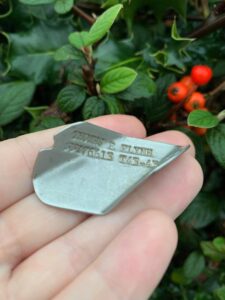 After researching this hero, it was found that while Thomas Flynn has died, his son and grandson are living less than 10 miles away ! Certainly is a small world! Chess and Fiona sent the dog tag to Sue Quinn-Morris, which was received on November 22nd, 2022.
After researching this hero, it was found that while Thomas Flynn has died, his son and grandson are living less than 10 miles away ! Certainly is a small world! Chess and Fiona sent the dog tag to Sue Quinn-Morris, which was received on November 22nd, 2022.
This WWII hero, served with the 376th Infantry, 94th Division and served from March 23, 1942 until Christmas Day December 25, 1945.
His unit left NYC for overseas in 1944 – first landing in England before proceeding to France. It was August 11, 1944 when he and his comrades arrived in Hullavington England. The troops were met by members of the advance party who had been preparing the camp site for over a month. The Regiment was located at Pinkney Park, situated one mile from the village of Sherston, Wiltshire, England.
Ironically, this is the area that Fiona David, some 76 years later, found Thomas Flynn’s military dog tag.
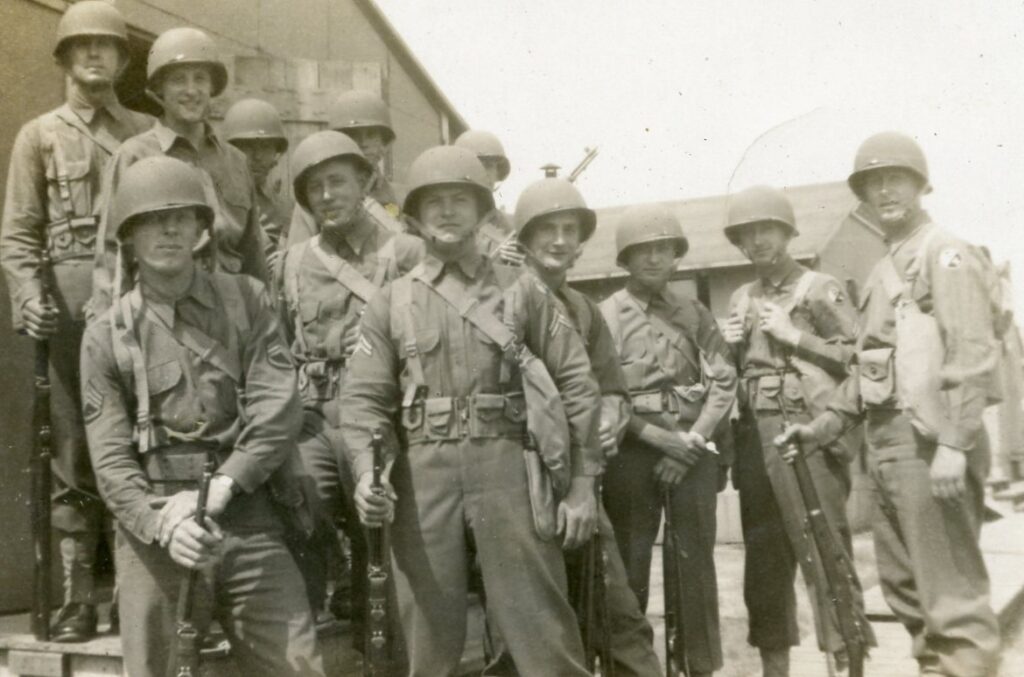 Once arriving in England the Regiment immediately began training, consisting mainly of hedgerow tactics, conditioning marches and range firing .. New vehicles and crew-served weapons were issued, as was ammunition and all other equipment needed to fill combat loads
Once arriving in England the Regiment immediately began training, consisting mainly of hedgerow tactics, conditioning marches and range firing .. New vehicles and crew-served weapons were issued, as was ammunition and all other equipment needed to fill combat loads
It was on September 6th, 1944 that had left Pinkney Park England bound for the docks in Southampton England.. That evening, under cover of darkness, the 376th left the blacked out coast of England – the destination they were told was simply “somewhere in France”
In the coming battles, Thomas Flynn was injured numerous times, including once in December of 1944 in France and also in February of 1945 in Germany, suffering a bullet wound in the thigh. He received a battlefield commission to 2nd Lt on February 1945 by command of Lt General Patton.
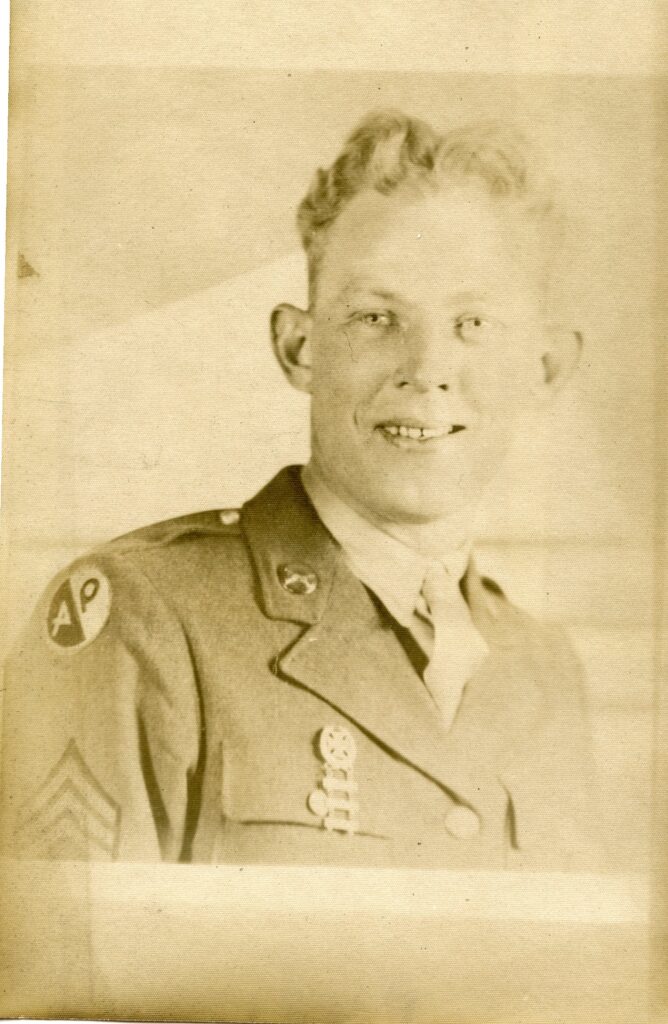 Thanks to Fiona and Chess for caring and understanding the importance of this treasure and beginning the journey….. Thank you Jeff Flynn for the conversations, information, stories and photos of your grandfather.
Thanks to Fiona and Chess for caring and understanding the importance of this treasure and beginning the journey….. Thank you Jeff Flynn for the conversations, information, stories and photos of your grandfather.
It takes a village they say, and the last leg of the journey home of 2nd Lt Thomas FLynns military dog tag came full circle with the help of our friends of the Cherry Hill PBA and Lt Col AL Bancroft.
On November 26, 2022, at the Cherry Hill PBA Annual Veterans Appreciation Dinner Vietnam Veteran, Thomas Flynn, was presented with his fathers Dog Tag with his family by his side, and surrounded by fellow comrades. CLICK HERE TO WATCH VIDEO
During the Veterans dinner, our beloved Ltc Al Bancroft was also honored for his 30+ years in the USMC and over 20 years with the Camden County Veterans Affairs Office, from which he recently retired. From attending hundreds of Welcome Homes, presenting Camden County Service medals to our local veterans, helping veterans with their benefits and much more, he has given selflessly to all our local veterans for over 30 years. HOORAH ! See below for photo
Thomas E. Flynn, was born April 11, 1919 in Philadelphia, PA. He entered the US Army in 1942 – 376th Infantry, 94th Division – this hero attained 2nd Lt, a battlefield commission – he was overseas from August 1944 until November 1945. His unit left NYC in August 1944, first landing in England before proceeding to France in September 1944. He was injured in December 1945, returned stateside and was discharged on Christmas Day 1945. After the war, he married and had 3 children. Unfortunately, he passed away on June 3, 1996.
376th HISTORY
Off to the Wars…
Photo: from Jeff FLynn (grandson of Thomas Flynn). Taken stateside 1944
(excerpt)….. and on Saturday, August 5th, 1944 the entire Regiment again took the train for New York City … This time not to return the same day. Every man and officer carried all of his T/E equipment from the train to the ferry. As the ferry touched the New York side, a Transportation Corps Band broke into the strains of “Sidewalks of New York.” The American Red Cross served lemonade and doughnuts, which refreshed every one enough to make the haul up the gangplank. At the end of the gangplank was the largest ship that any of the men had ever seen. In fact it was the largest ship the world had ever seen-the famed HMS Queen Elizabeth.
When the loading was complete the entire division plus numerous smaller detachments were aboard.
The motors of the Elizabeth started to churn the waters of New York Harbor at exactly 0125, Sunday, August 6th, 1944.
Soon every one was taking a last look at the American shoreline.
Although quarters were close and often uncomfortably hot, the sea was smooth and almost everybody enjoyed the entire trip without a trace of mal de mer. Daily routine was determined by the ship’s calls, which were mostly chow, boat drill and blackout. Only two meals a day were served, but these occupied most of the daylight hours, the vast number of men necessitating six shifts in three mess halls.
The food, though usually ample, was typically English, and strange to the palates of most of the men. After the last shift of the morning meal, every one reported to the boat deck for “abandon ship” drill. At this formation news and announcements were published.
Ireland was sighted on Friday, August 11th. After sailing down the scenic Firth of Clyde, the Elizabeth dropped anchor in the harbor off the picturesque village of Grenoch, Scotland. Not until the next day did debarkation begin.
Despite the blazing sun, the orders called for the wearing of overcoats and the carrying of all equipment. By the time land was reached, everyone was sweltering. But the Red Cross came to the rescue with beverages and doughnuts. And there was a kilt-clad Scotch bagpipe band playing weird melodies as the men boarded the unfamiliar English trains. The train trip from Grenoch to Hullavington, England was filled with unusual and lovely scenery. And for the first time men of the 376th heard the now historic plea, “Any gum chum?”
At Hullavington the troops were met by members of the advance party who had been preparing the camp site for over a month. The Regiment was located at Pinkney Park, situated one mile from the village of Sherston, Wiltshire, England. Quarters were pyramidal tents, with headquarters and mess halls in Nissen huts. (…presumably the place Thomas E Flynn lost his dog tag..as it was found in Wiltshire area)
The Regiment immediately began training, consisting mainly of hedgerow tactics, conditioning marches and range firing . Many valuable tips were received from officers who had returned from Normandy in regard to hedgerow fighting. New vehicles and crew-served weapons were issued, as was ammunition and all other equipment needed to fill combat loads.
As usual the men of the Regiment applied themselves to off duty activities as assiduously as they did their official functions. Dances were held at Pinkney Park, with partners recruited from neighboring civilians and WAAF’s. Bristol, Gloucester, Malmsbury, Cheltenham and Chippingham were visited nightly. Most of the men were fortunate enough to get passes to London, where the Red Cross provided rooms, food, and a tour of the city.
It was on September 5th that the organic transportation left Pinkney Park for the embarkation area at Southampton. The next day the rest of the Regiment marched to Hullavington, entraining at the same station where they had detrained a month previously. On the afternoon of September 6th troops were filing up the gangplanks into the HMS Cheshire at the Southampton docks. That evening, under cover of darkness, the 376th left the blacked out coast of England behind.
Destination: Somewhere in France
More to follow…. Click here to read the completer history of the 376t



